“Global Wi-Fi Module Market to reach a market value of USD 119.89 Billion by 2031 growing at a CAGR of 11.0%”
The Global Wi-Fi Module Market size is expected to reach $119.89 billion by 2031, rising at a market growth of 11.0% CAGR during the forecast period.
The Asia Pacific segment garnered 36% revenue share in the market in 2023. This dominance is primarily attributed to major manufacturing hubs like China, Japan, South Korea, and Taiwan, where the production of consumer electronics, smart devices, and IoT solutions is highly concentrated. The demand for these modules in this region has been further fuelled by rapid urbanization, increasing penetration of smart home technologies, and increasing adoption of industrial automation in emerging economies such as India and Southeast Asia.
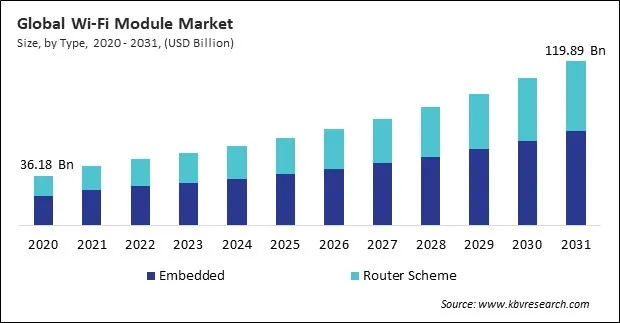
The major strategies followed by the market participants are Product Launches as the key developmental strategy to keep pace with the changing demands of end users. For instance, In April, 2023, Texas Instruments, Inc. unveiled the SimpleLink CC33xx Wi-Fi 6 companion ICs, enabling secure, reliable, and efficient IoT connectivity in industrial applications. Supporting Wi-Fi 6 and Bluetooth Low Energy 5.3, these affordable devices enhance network efficiency, security, and performance in high-density environments, operating from –40ºC to 105ºC. Moreover, In January, 2025, NXP Semiconductors N.V. unveiled its FRDM ecosystem with the FRDM-IMX93 Development Board, featuring the i.MX 93 Applications Processor and IW612 Wi-Fi 6 Tri-Radio. This first FRDM board with built-in Wi-Fi supports an RCP architecture for high-performance connectivity, enabling applications in smart homes, security, EV charging, and industrial solutions.
Based on the Analysis presented in the KBV Cardinal matrix; Qualcomm Incorporated, Broadcom, Inc., and Intel Corporation are the forerunners in the Wi-Fi Module Market. In November, 2020, Intel Corporation unveiled Wi-Fi 6E AX210 an M.2 2230 wireless card supporting 802.11ac/ax and the new Wi-Fi 6E standard, enabling 6 GHz band connectivity for faster speeds. It requires a Wi-Fi 6E router, like the Asus ROG Rapture. Companies such as Texas Instruments, Inc., Infineon Technologies AG, and MediaTek, Inc. are some of the key innovators in Wi-Fi Module Market.
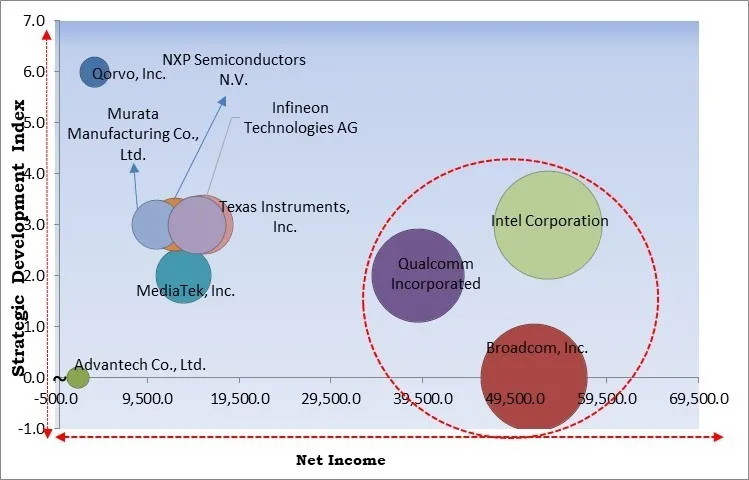
As sectors such as smart homes, healthcare, manufacturing, agriculture, and logistics increasingly embrace IoT technology, the demand for reliable and efficient Wi-Fi connectivity solutions continues to surge. These modules enable seamless communication between these smart devices and centralized systems, ensuring data is transmitted accurately and in real-time. Hence, as the IoT ecosystem continues to expand, with billions of devices expected to be connected in the coming years, the demand for advanced, secure, and energy-efficient Wi-Fi modules is anticipated to grow exponentially.
Additionally, Industry 4.0 represents the fourth industrial revolution, characterized by the integration of advanced technologies such as artificial intelligence (AI), machine learning (ML), the Internet of Things (IoT), and big data analytics into manufacturing and industrial operations. As factories and production facilities strive to become smarter, more efficient, and more agile, they increasingly adopt automated systems that rely heavily on wireless connectivity to function optimally. Thus, as industrial enterprises continue to embrace digital transformation and aim for higher operational efficiency, the demand for reliable, secure, and high-performance Wi-Fi modules is expected to surge.
However, The energy required to operate these modules is significantly higher than that of other wireless communication technologies, such as Bluetooth Low Energy (BLE), Zigbee, or LoRa. The primary reason for this heightened energy demand is the necessity to maintain a stable signal over extended distances, as well as the higher data transmission rates and continuous connectivity requirements. Energy efficiency is critical in battery-powered applications like IoT sensors, wearable devices, smart home automation, and remote monitoring systems. Hence, without significant improvements in energy optimization, these modules may struggle to dominate in applications where power efficiency is paramount.
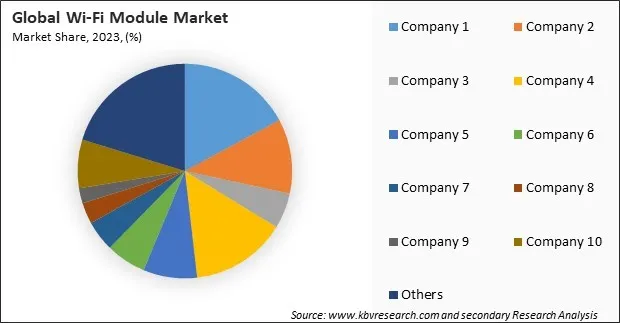
The leading players in the market are competing with diverse innovative offerings to remain competitive in the market. The above illustration shows the percentage of revenue shared by some of the leading companies in the market. The leading players of the market are adopting various strategies in order to cater demand coming from the different industries. The key developmental strategies in the market are Product Launches and Product Expansions.
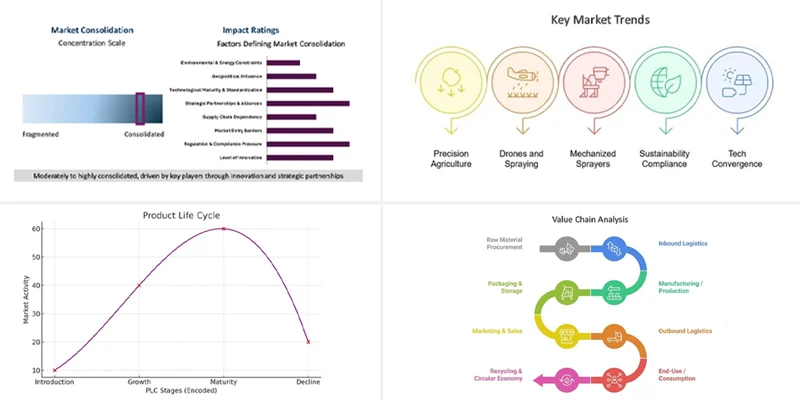
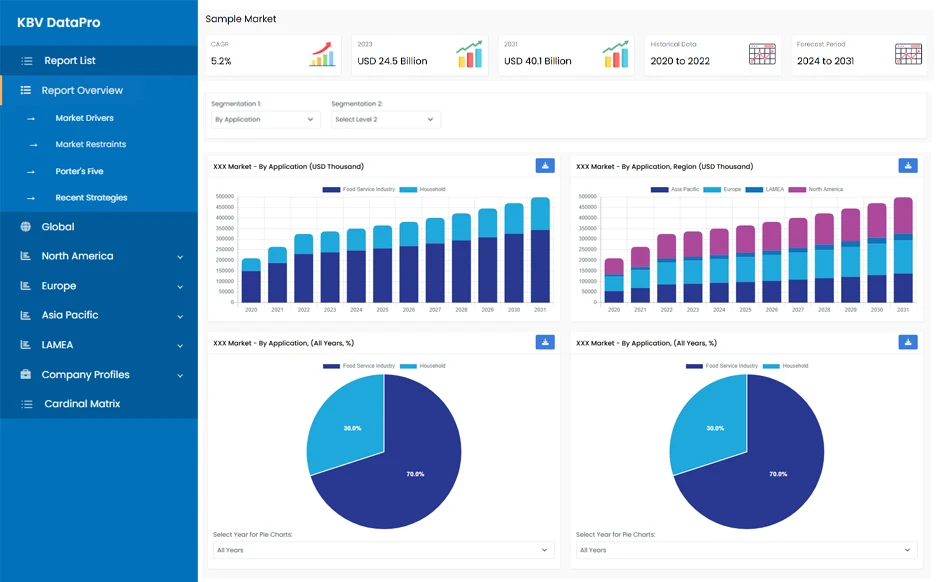
On the basis of application, the market is classified into consumer electronics, enterprise, industrial, smart home, medical, and others. The smart home segment acquired 23% revenue share in the market in 2023. The rise in smart home automation products such as smart speakers, lighting systems, security cameras, and thermostats has created a robust demand for these modules that enable seamless wireless connectivity and remote control. The adoption of Wi-Fi-enabled smart home devices has been further accelerated by the proliferation of voice-controlled assistants such as Amazon Alexa and Google Assistant, as well as the increasing awareness of IoT technologies.

Based on type, the market is bifurcated into embedded and router scheme. The router scheme Wi-Fi modules segment procured 41% revenue share in the market in 2023. These modules are typically used in network routers, gateways, and access points to provide internet connectivity to multiple devices within a local area network (LAN). The deployment of the router scheme Wi-Fi modules has been greatly impacted by the increasing need for high-speed internet, which is being driven by home entertainment, online education, and remote work.
Free Valuable Insights: Global Wi-Fi Module Market size to reach USD 119.89 Billion by 2031

The Wi-Fi Module Market remains competitive with numerous regional and emerging companies driving innovation. Smaller firms focus on cost-effective, customized solutions for IoT, industrial automation, and smart home applications. Competition is fueled by advancements in low-power modules, security enhancements, and expanding applications, fostering a dynamic landscape with opportunities for niche players to gain market share.
Region-wise, the market is analyzed across North America, Europe, Asia Pacific, and LAMEA. The North America segment procured 30% revenue share in the market in 2023. This region benefits from the early adoption of advanced technologies and high consumer demand for smart home devices, connected healthcare solutions, and industrial IoT applications. The presence of key technology giants and a strong focus on digital transformation across industries have accelerated the deployment of Wi-Fi-enabled products.
| Report Attribute | Details |
|---|---|
| Market size value in 2023 | USD 52.79 Billion |
| Market size forecast in 2031 | USD 119.89 Billion |
| Base Year | 2023 |
| Historical Period | 2020 to 2022 |
| Forecast Period | 2024 to 2031 |
| Revenue Growth Rate | CAGR of 11.0% from 2024 to 2031 |
| Number of Pages | 209 |
| Number of Tables | 282 |
| Report coverage | Market Trends, Revenue Estimation and Forecast, Segmentation Analysis, Regional and Country Breakdown, Competitive Landscape, Market Share Analysis, Porter’s 5 Forces Analysis, Company Profiling, Companies Strategic Developments, SWOT Analysis, Winning Imperatives |
| Segments covered | Type, Application, Region |
| Country scope |
|
| Companies Included | Qualcomm Incorporated (Qualcomm Technologies, Inc.), MediaTek, Inc., Qorvo, Inc., Broadcom, Inc., Murata Manufacturing Co., Ltd., NXP Semiconductors N.V., Infineon Technologies AG, Texas Instruments, Inc., Advantech Co., Ltd., and Intel Corporation |
By Type
By Application
By Geography
This Market size is expected to reach $119.89 billion by 2031.
Rapid Expansion Of Iot (Internet Of Things) are driving the Market in coming years, however, High Power Consumption Issues restraints the growth of the Market.
Qualcomm Incorporated (Qualcomm Technologies, Inc.), MediaTek, Inc., Qorvo, Inc., Broadcom, Inc., Murata Manufacturing Co., Ltd., NXP Semiconductors N.V., Infineon Technologies AG, Texas Instruments, Inc., Advantech Co., Ltd., and Intel Corporation
The expected CAGR of this Market is 11.0% from 2023 to 2031.
The Embedded segment led the maximum revenue in the Global Wi-Fi Module Market by Type in 2023, thereby, achieving a market value of $68.8 billion by 2031.
The Asia Pacific region dominated the Market by Region in 2023, and would continue to be a dominant market till 2031; thereby, achieving a market value of $44.0 billion by 2031.
Our team of dedicated experts can provide you with attractive expansion opportunities for your business.

 Drivers
Drivers
 Restraints
Restraints
 Opportunities
Opportunities
 Challenges
Challenges
